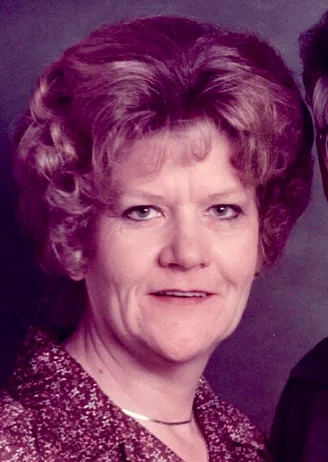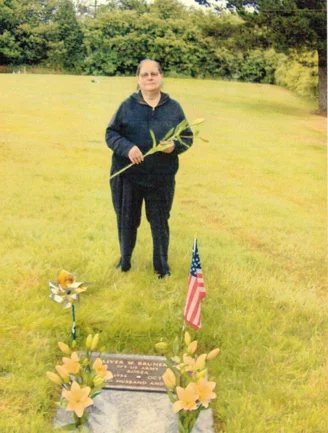OBITUARY: Verne Leslie Skjonsby Jr., 1940-2023
LoCO Staff / Tuesday, May 9, 2023 @ 6:56 a.m. / Obits
Verne
Leslie Skjonsby Jr. passed away on May 2, 2023, in Cutten. He was lovingly cared for by family members spending his
final days at home. He was also given amazing care by Hospice of
Humboldt.
Verne was third-generation born in Honolulu. His grandfather Jason was born under the reign of King Kalakaua. The family was originally from the Azores and Madeira.
He attended Punahou High School and the Lawrenceville School and graduated from the University of Colorado with a degree in anthropology. He had a wide range of careers that generally were always involved with education.
He started teaching the gifted and highly gifted in science in the seventh and eighth grades. The students’ learning experiences took place flying rockets in the air and traveling on the R.V. Inland Seas on the San Francisco Bay.
He became fascinated with the early computers and taught a large company’s employees to use those very large computers. He went onto working for Tandy doing the final assembly of computers and again training people how to use their computers. His last job in computers was to teach bid estimating to contractors all over the United States. He especially liked doing it in Alaska, as the contractors would take him out in small planes to see different areas of Alaska.
He was a lay assisting minister in the Lutheran Church for 35 years — first in Burlingame, being trained by Pastor Peter Garrison, and then at Calvary Lutheran Church in Eureka. He spent the last years of his life training new Lay Assisting Ministries at Calvary, leaving a strong legacy behind. He served on Lutheran Homes for the Aging Board for fifteen years, and many years on Calvary Council.
He served on the Pacific Union School board for nine years and when he moved to Cutten he served on the Cutten School Board for four years. Every election he could be found doing a wide range of activities from being a poll worker to being a supervisor of several polling places. He felt it was very important to be a blood donor and was honored by Peninsula Blood Bank, in Burlingame, for his ten-gallon donation. When he moved to Humboldt, he gave seven gallons of blood to the local blood bank. Ill health stopped him from being a donor, which he was very disappointed about.
Verne was an avid reader, which made the Mensa book club one of his favorite activities. He was a faithful member of the group the 22 years he lived in Humboldt County. He liked being the host of the Book Group. He attended many of the other activities that Mensa provided.
He learned camping from his wife, Dorothy and most summers were spent camping in most of the Western United States and Canada. The family’s favorite spot was Yosemite, during both summer and winter. One winter even being caught in a blizzard while cross country skiing with his family. Being five stubborn individuals the family all made it back safely.
His father, Lieutenant Commander Verne Leslie Skjonsby, and his mother, Dorothy Marie Andrade Skjonsby, preceded him in death. He leaves behind his wife of 52 years, Dorothy Eda Svennngsen Skjonsby; his children, Johannes Skjonsby, Jason Skjonsby, and Kierstine Escalante; his daughters-in-law, Surya Skjonsby, Fern Dalton, and Stacy Escalante; and grandchildren, Karishma Skjonsby, Beorn Skjonsby, Phelan Escalante and Luca Escalante.
In place of flowers donations can be made to the Eureka Mission or Hospice of Humboldt, in memory of Verne Leslie Skjonsby, Jr.
Remembrance services will be held May 27 at 2 p.m. at Calvary Lutheran Church 716 South Ave. (across from Alice Birney) in Eureka. Fellowship will follow the service.
###
The obituary above was submitted on behalf of Verne Skjonsby’s loved ones. The Lost Coast Outpost runs obituaries of Humboldt County residents at no charge. See guidelines here. Email news@lostcoastoutpost.com.
BOOKED
Today: 5 felonies, 11 misdemeanors, 1 infractions
JUDGED
Humboldt County Superior Court Calendar: Today
CHP REPORTS
No current incidents
ELSEWHERE
Mad River Union: A message from Northtown Books
RHBB: Calf Causes Brief Drama on Highway 101 Near Elk River
RHBB: Highway 36 Closed Again at Grizzly Bluff Slides After Boulder Hits Vehicle
OBITUARY: Shirley Joan VanCleave, 1936-2023
LoCO Staff / Tuesday, May 9, 2023 @ 6:56 a.m. / Obits
Joan
VanCleave was born in Billings, Montana on December 4, 1936 and fell
asleep in death on March 27, 2023 at Redwood R&R in Eureka. She
was the youngest of five children. She married William “Bill”
VanCleave on December 31, 1953, and they enjoyed 61 years together
until Bill’s death on October 25, 2015.
In the early 1960s, Joan and Bill moved from the coast to help establish a congregation of Jehovah’s Witnesses in the Hoopa and Willow Creek area. They loved sharing their Bible-based hope of the time, soon, when God’s Kingdom under the rulership of Jesus Christ will bring peace earth-wide. Over the years, they studied the Bible with others, some of whom also came to love and serve Jehovah God.
Some, including her niece and a friend from the coast, fondly recall summer visits and going with Joan and Bill inner tubing, swimming, camping and making homemade cookies.
Occasionally, Joan liked playing pranks. One friend related the time Joan made delicious pancakes covered in syrup for the friend’s sons, but they were unable to cut them because Joan had put rolls of cotton in them for a laugh.
Joan was a school bus driver for many years. Some who rode her bus as children still called her “Mrs. VanCleave” after they grew up, and some of their children also rode her bus.
Joan appreciated her kind and loving neighbors, Gary and Karen Madsen and Hiedi and Keir Johnston, who checked in on her and brought her food.
Joan was preceded in death by her parents, four siblings, one nephew, and her husband, Bill. She is survived by her one niece and her family.
Many thanks go to Joan’s caregivers at Redwood R&R and Hospice of Humboldt for their compassionate care.
A memorial for Joan VanCleave will be held on Saturday, May 13, 2023 at 2 p.m. at the Kingdom Hall of Jehovah’s Witnesses, 65 Blue Jay Lane, Willow Creek. To attend via Zoom, please use this information: ID: 834 5987 6618 Passcode: 546832.
###
The obituary above was submitted on behalf of Shirley VanCleave’s loved ones. The Lost Coast Outpost runs obituaries of Humboldt County residents at no charge. See guidelines here. Email news@lostcoastoutpost.com.
OBITUARY: Celeste Marie Bruner, 1940-2023
LoCO Staff / Tuesday, May 9, 2023 @ 6:56 a.m. / Obits
Celeste Marie Bruner, 82 passed away on May 2, 2023.
Mom was born July 30, 1940 to Manuel and Lena Machado. She grew up on a dairy farm in Arcata. At the age of five she was driving tractors. One day she was driving into the hay barn and the floor started to give way. Boy, did grandpa yell, but only because he thought she was hurt.
When she went to Arcata High she enjoyed singing in the choir. Mom lettered in basketball. Anyone who knew her is probably laughing right now because she was little — she was only 5’1” — but she was fast. She graduated in 1958.
In 1959, mom met Oliver Bruner at a Fireman’s Ball. They were married February 21, 1960. They spent 50 wonderful years together until Daddy passed away on October 10, 2010. If mom wasn’t at home you could find her at the local casinos.
Celeste is survived by her daughter, Cheryl Quigley, and her favorite and only son-in-law Gary; her brother, Manuel (Audrey) Joe; John Machado; and several nieces and nephews. Mom was preceded in death by her husband, Ollie, her parents Manuel and Lena Machado, and her sister, Eleanor Machado.
Celeste’s family would like to invite you to attend her services. Visitation will be at Paul’s Chapel Arcata on Thursday, May 11, from 4 p.m. to 7 p.m. A funeral service will be held at the same location Friday, May 12 at 11 a.m. Following the services there will be an interment in the Veterans Garden at Ocean View Cemetery.
###
The obituary above was submitted on behalf of Celeste Bruner’s loved ones. The Lost Coast Outpost runs obituaries of Humboldt County residents at no charge. See guidelines here. Email news@lostcoastoutpost.com.
SAN MARINO WEEK: A Very Brief Overview of the 67th Eurovision Song Contest, With Emphasis on Recent Attempts to Persuade Americans to Care, by Humboldt’s Foremost Authority on the Contest’s History
John Kennedy O’Connor / Monday, May 8, 2023 @ 4:11 p.m. / Music
The Fortress of Guaita overlooks much of the San Marino countryside, and probably much more of the Italian countryside. Max_Ryazanov, CC BY-SA 3.0, via Wikimedia Commons.
###
ED. NOTE: Today the Outpost is delighted to kick off its first maybe-annual “San Marino Week” of programming, in which we seek to strengthen the bonds between Humboldt County and the tiny European country.
All this week, if everything goes according to plan, our John Kennedy O’Connor will be filing dispatches — or “despatches,” as he might call them — from San Marino’s rocky slopes, in between his duties as the country’s official vote-reader for this week’s Eurovision Song Contest, of which he is a world-renowned expert.
Speaking of which: Tuning in for the Contest this year? O’Connor has prepared the following precis of this year’s festivities, aimed at the novice American viewer. Please enjoy.
###
‘This Saturday, the global TV audience will have all eyes on the former industrial port city of Liverpool on England’s Western coast as the UK hosts the 67th Eurovision Song Contest — an annual competition inaugurated in 1956 to find Europe’s best new popular song by the national TV broadcasters across the continent. Two hundred million viewers across the globe are expected to tune in.
For most Americans, if they’ve heard of it all, they certainly will have little interest in sitting down for what is now a four-hour-plus live broadcast that encompasses nations from well beyond Europe’s borders and is regarded with much disdain and loathing by the millions who’ll tune in. Many freely admit they will be watching just to see how bad it’s going to be this year, and despite the winner being chosen mainly by the viewers watching, almost nobody will agree with the result.
However, yet again, NBC will be carrying the live broadcast on their Peacock platform, and for the very first time American viewers will be able to vote by phone for the songs. This year, a “rest of the world” vote will be added to those of the competing 37 nations.
NBC’s involvement in the contest began in 2006, when one of their star presenters, Maria Menounous, was parachuted into the show as the co-hostess of the edition staged at the Olympic stadium in Athens.
Despite purchasing the rights to the format for American viewers, Maria’s star turn did nothing to get the concept of an interstate American version of the show off the ground and NBC shelved plans to get it going.
All that changed in the last decade, when NBC started airing the contest on the fledgling Peacock platform, complete with an American commentator explaining for the small number of viewers exactly what was going on.
The attempts to get an American version of the show at long last came to fruition in the spring of 2022, when The American Song Contest finally made a much heralded appearance in the NBC schedules.
In fact, what NBC imported was not so much the Eurovision Contest itself, but the Swedish domestic competition that is used annually to select Sweden’s entry. The multi-week interstate contest hosted by Kelly Clarkson and Snoop Dogg turned out to be of little interest to American viewers … and the show is widely reported to be the worst-performing entertainment show NBC have ever broadcast and indeed, the most expensive. The second season was postponed until 2024, although most industry insiders doubt it will return even then.
Whether the American viewers will take any interest in this year’s Eurovision Song Contest is yet to be seen, despite the added allure of viewers getting a say in the result. It is hard to imagine folks tuning in for an international contest with no American involvement at all if they weren’t interested at all in watching an interstate U.S. competition. Doubtless, the network is encouraged by the success of recent winners Duncan Laurence and Måneskin in the US charts, scoring considerable hits despite the lack of viewers or interest in the competition.
The scoring of the contest is notoriously complex and may leave US viewers baffled. The European Broadcasting Union, which is in charge of the competition, has provided a video guide to how it all works… but even that may still leave those familiar with the contest hopelessly confused.
Normally, the broadcaster that wins the contest hosts the next edition, but with the war in Ukraine still raging, the idea that Ukraine would host this year’s show following their victory in Turin last spring was a non-starter.
As the UK had earned their record 16th second-place in the show’s history, the BBC stepped in as the runners-up to bring the show back to the UK for the first time since 1998. It is in fact the first time since 1980 that the winning nation was unable to host the following contest.
A bidding war between multiple British cities took place to decide which venue would end up with the multi-million pound poisoned chalice, and in the final reckoning, Liverpool beat out Glasgow for the dubious honor.
Liverpool city council were beside themselves with joy to get the gig and estimate that fifty million pounds will be flowing into cash registers across the city this week as the world’s media and those lucky enough to have scored tickets for the shows descend. A week-long festival of events is taking place outside of the competition itself for all those visitors to enjoy.
The tap to the American audience is also clear in the BBC’ choice of presenters for the show, as Ted Lasso star Hannah Waddingham is one of the four celebrities selected to compère the finals.
The contest kicks off on Tuesday at noon on the West Coast with the first of two semifinals, when ten songs will be chosen to appear in Saturday’s final. A second semifinal selects the next ten on Thursday. These qualifiers then join the six nations that automatically qualify for the final (the previous year’s winner and the big five nations of Germany, France, Italy, Spain and the United Kingdom). All three shows will be live on Peacock, with live tele-voting for the US viewers to have their say.
For who that would like to see the shows but don’t have a Peacock subscription, some of the European nations participating provide international live feeds, but their commentaries provided in their own language may be too much for US viewers.
San Marino RTV will be providing a free telecast, with commentators Lia Fioro and Gigi Restivo whipping their domestic audience into an excited frenzy in Italian.
For any potential viewers who’d like to know what they’ll be in for, the BBC have put together a guide for the uninitiated, which can be found here. If you’d like to see and hear all 37 entries, a full guide is available at this link.
If you’d just like a quick skim through all 37 songs… there’s a compilation of about 20 seconds of each song here:
There will be a brief moment in the contest on Saturday that Lost Coast readers may be marginally interested in catching. Each of the participating nations contributes a jury vote to the proceedings and a local celebrity gets to read out that score for the millions of viewers. The tiny enclave of San Marino is light on celebrity, so they have imported one for the purpose, although the term “celebrity” is stretching credibility thin, for sure. The 30-second appearance may be worth tuning in for, but if you blink… you may be disappointed.
Regardless, Humboldt Today will be presenting the newscasts from the tiny Republic in the run-up to the contest, and the Outpost will be having Humboldt Conversations with local dignitaries illuminating life in the microstate for the Lost Coast audience, including the former San Marino ambassador to the USA.
The TV competition that gave the world ABBA, Céline Dion and Måneskin — and made embarrassed losers out of Julio Iglesias, Engelbert Humperdinck, Bonnie Tyler, Olivia Newton John and t.A.T.u., seriously impairing their credibility and previous hit making status in the USA — is upon us. You have been warned.
HUMBOLDT TODAY with John Kennedy O’Connor | May 8, 2023
LoCO Staff / Monday, May 8, 2023 @ 4:02 p.m. / Humboldt Today
HUMBOLDT TODAY: Hopefully that’s the last li’l storm of the season, yeah? We have a quick roundup of the minor carnage; the California Reparations Task Force has approved their recommendations which could amount to millions of dollars for eligible Black Californians; plus, don’t even think of leaving your couch on Arcata’s streets, kids! Those stories and more in today’s online newscast with John Kennedy O’Connor.
FURTHER READING:
- PLEASE DON’T DUMP YOUR SH*T: With Cal Poly Humboldt Graduation Approaching, The City of Arcata Reminds Folks to Dispose of Their Unwanted Stuff Legally and Responsibly
- Two Arrested on Drugs, Weapons Charges After ‘High-Risk’ Traffic Stop Near Blue Lake Yesterday, Sheriff’s Office Says
- Eureka City Government Moves to Acquire Still Another Piece of Land for Proposed Bay-to-Zoo Trail
- Reparations Panel Recommends Possible Millions for Eligible Black Californians
HUMBOLDT TODAY can be viewed on LoCO’s homepage each night starting at 6 p.m.
Want to LISTEN to HUMBOLDT TODAY? Subscribe to the podcast version here.
Cal Poly Humboldt to Hold Its First Regional Commencement Ceremony in Beverly Hills Next Monday
Ryan Burns / Monday, May 8, 2023 @ 2:28 p.m. / Cal Poly Humboldt
“I need a designer handbag for this log.” | Image adapted from photo by TobiasStage, CC BY-SA 4.0.
###
Look out, Beverly Hills: Here come the Lumberjacks.
Graduation weekend is nearly upon us, and for the first time in Cal Poly Humboldt State University history, students who are walking this semester can choose to receive their diplomas at the traditional on-campus ceremony, in scenic Redwood Bowl, or at a SoCal celebration next Monday in Beverly Hills. Or both!
The “regional commencement ceremony” will be held in the historic Saban Theatre, a 93-year-old Art Deco landmark that previously hosted Hollywood film premiers and such musical luminaries as Stevie Nicks, David Crosby and Art Garfunkel.
“By offering a ceremony in Southern California where many students come from, the University is bringing a piece of Humboldt directly to families so they can watch their student walk across the stage in person as they reach a major milestone in their lives,” Cal Poly Humboldt Communications Specialist Grant Scott-Goforth said in an email to the Outpost.
The ceremony will also make commencement accessible to full-time online students who live in SoCal, he added.
The university is striving to provide all the usual pomp and circumstance at the regional ceremony: students walking across the stage when their names are announced, parents and friends in attendance, shouting their approval. The Associated Students president, an alumni speaker and some faculty members will be in attendance at the Saban.
Not everyone is excited by this new ceremony, though. Wildberries Marketplace Manager Aaron Gottschalk told the Outpost that he’s worried about the potential for lost revenues to local businesses.
“Commencement weekend brings families and visitors into Humboldt to enjoy all that we have to offer as well as pump up sales for every business related to the tourism industry,” Gottschalk wrote in an email. “To hear that Cal Poly Humboldt has initiated a new program to hold commencement exercises down in SoCal is a real bummer. In these challenging economic times we are looking for every advantage possible to maintain business flow and profitability. The decision to hold some of the commencement exercises out of the area is certainly not a business-friendly decision.”
Emails and phone messages left with several other Arcata businesses Friday and Monday were not returned by the time of publication.
Asked about such concerns from the business community, Scott-Goforth noted that the university now holds commencement ceremonies twice a year — in May and in December — to “provide more opportunities for students and their families to celebrate this milestone achievement.”
Of the nearly 1,200 graduates participating in commencement this spring, just 55 have signed on to attend the Beverly Hills ceremony, according to Scott-Goforth.
“Some students are doing both [Arcata and Beverly Hills] and some students are opting out of the on-campus ceremonies for various reasons,” he said. As for supporting local businesses, Scott-Goforth noted that “the University hosts many other events throughout the year, including Fall and Spring Previews and Green & Gold Homecoming week, and move-in and orientation weekend that bring students and their families to the region.”
Regardless of where they’ll be, the Outpost congratulates this year’s graduates. And for those who can’t attend, we invite you to have a look around the Saban Theatre, courtesy of Google:
PLEASE DON’T DUMP YOUR SH*T: With Cal Poly Humboldt Graduation Approaching, The City of Arcata Reminds Folks to Dispose of Their Unwanted Stuff Legally and Responsibly
Stephanie McGeary / Monday, May 8, 2023 @ 2:09 p.m. /
Leaving a couch like this behind? Not cool. | Photo by Chris on Flickr. Creative Commons license.
###
As we near the end of Cal Poly Humboldt’s school year and many students prepare to return home for the summer or bid a final farewell to their temporary Arcata homes, the City of Arcata would like to remind all those who are moving away that dumping your sh*t on the street is totally not cool, bro.
Though illegal dumping is an ongoing issue in many parts of Humboldt, those who have live in Arcata for a long time know that in the month of May free boxes and piles take over nearly every neighborhood, the curbs are lined with college house couches and the dumpsters overflow with deserted furniture and housewares. Locals even dubbed the time of year “Hippie Christmas” (does anyone still say that?) — for the fact that one can “shop” the local dumpsters and free piles for all sorts of reusable goods.
But even though it can be a fun time for Arcata residents to refurnish their homes, a lot of unwanted stuff gets left on the street and the City ends up having to clean up the mess. So, if you are moving this month, please help Arcata by getting rid of your stuff in a responsible way, like selling it online (might we suggest posting it to LoCO Classyfieds?), donating it to one of our local thrift stores, or taking it to the dump.
So, congratulations to Humboldt’s graduating class! Thank you for staying with us for the time you did, and remember: you are an adult now and should be able to take care of properly disposing of your own crap! (But if you do have any good stuff, feel free to let us know, cuz this reporter needs some new dining room chairs. Thanks!)
There is more information on how to properly dispose of your unwanted items in this City of Arcata press release:
The City of Arcata needs the community’s help to eliminate illegal dumping and unsightly littering in our streets, alleys and other public right-of-ways. As school is coming to an end, now is the perfect time to properly dispose of unwanted items from a dorm, apartment or house.
Around this time of year, a lot of unwanted furniture, dishes, books, clothes and other items are left on street corners and sidewalks. The City of Arcata is required to keep streets and sidewalks clean and safe, and City crews must often stop other work to pick up the unwanted mattresses, sofas and clothes for transport to the landfill.
When no longer in want or need of something, the best thing to do is donate it. This ensures that your unwanted item does not end up in the landfill and that the person on the receiving end will save money and resources by not buying it new. There are various local thrift stores that will accept gently used items that are in good condition. A list of local thrift stores and non-profits can be found at cityofarcata.org/275/Zero-Waste and on the City’s “Don’t Dump and Run” brochure, available at City Hall or online at tinyurl.com/DDR-Brochure. Please make sure that all items are clean, dry and in good working condition. Please call before donating to confirm items accepted and hours!
If thrift stores and non-profits do not or cannot take items, make sure to take it to the appropriate disposal site. Check the Materials Management Guide at tinyurl.com/Materials-Management to learn how to properly dispose of everything from a light bulb to appliances and furniture.
Have furniture or appliances that need transportation to the dump? Residential Recology account holders are entitled to two bulky item pick-ups a year at no extra cost. Call Recology Arcata at (707) 683-4853 to schedule a pick-up.
To report illegal dumping, please call Arcata Police Dispatch at (707) 822-2424. For more information on zero waste practices visit cityofarcata.org or call the Environmental Services Department at (707) 822-8184.







